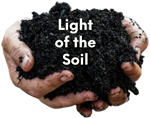The article "Assessing Soil Health: Measuring the Soil Microbiome" by Elizabeth Rieke and Shannon Cappellazzi, published in the March–April 2021 issue of Crops & Soils Magazine explores how scientists measure soil health by studying the tiny living organisms in the soil, known as the soil microbiome. These microorganisms, such as bacteria and fungi, play a crucial role in maintaining soil health by breaking down organic matter, providing nutrients to plants, and protecting crops from diseases.How Scientists Measure the Soil Microbiome:Soil Sampling:According to Rieke and Cappellazzi, soil samples for microbiome studies should be taken from the top 15 cm (about 6 inches) of soil and kept cool to prevent changes in the microbial community before laboratory analysis (Rieke & Cappellazzi, 2021).
Laboratory Methods:Microbial Respiration: This method measures the carbon dioxide released by microorganisms as they break down organic matter. Like humans exhaling, microbes release carbon dioxide, which helps scientists gauge their activity level (Rieke & Cappellazzi, 2021).
Phospholipid Fatty Acids (PLFA): PLFA are components of cell membranes in living cells. Measuring them helps estimate the number and types of microbes in the soil (Rieke & Cappellazzi, 2021).
Enzyme Activity: Enzymes are like tiny tools used by microbes to break down substances in the soil. Scientists measure the activity of certain enzymes to see how efficiently the soil can break down nutrients for plants (Rieke & Cappellazzi, 2021).
DNA-Based Methods:Targeted Amplicon Sequencing: This technique analyzes DNA sequences to identify different types of microbes present in the soil (Rieke & Cappellazzi, 2021).
Metagenomic Sequencing: This method examines all the genetic material in the soil to understand the functions of the microbial community, such as nutrient cycling and carbon storage (Rieke & Cappellazzi, 2021).
Why It Matters: Understanding the soil microbiome is crucial because healthy soil is essential for growing healthy crops. Farmers and scientists use these measurements to determine the best practices for maintaining soil health, such as using cover crops, reducing tillage, and adding organic materials to the soil (Rieke & Cappellazzi, 2021).Summary: Rieke and Cappellazzi (2021) provide a comprehensive overview of the different methods used to assess the activity and diversity of soil microbes, which are essential for maintaining soil health. By understanding the soil microbiome, we can improve agricultural practices and protect our environment.

